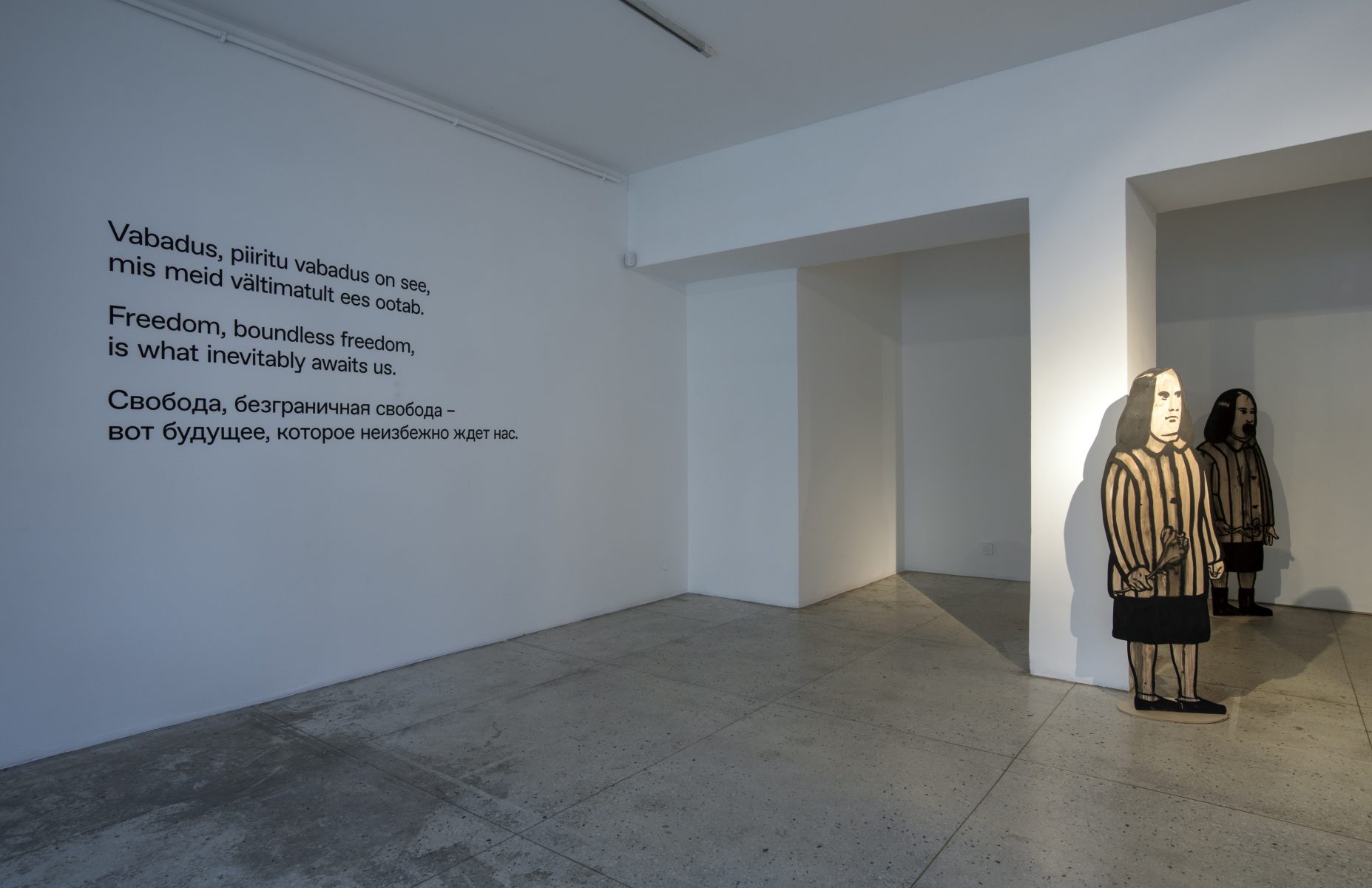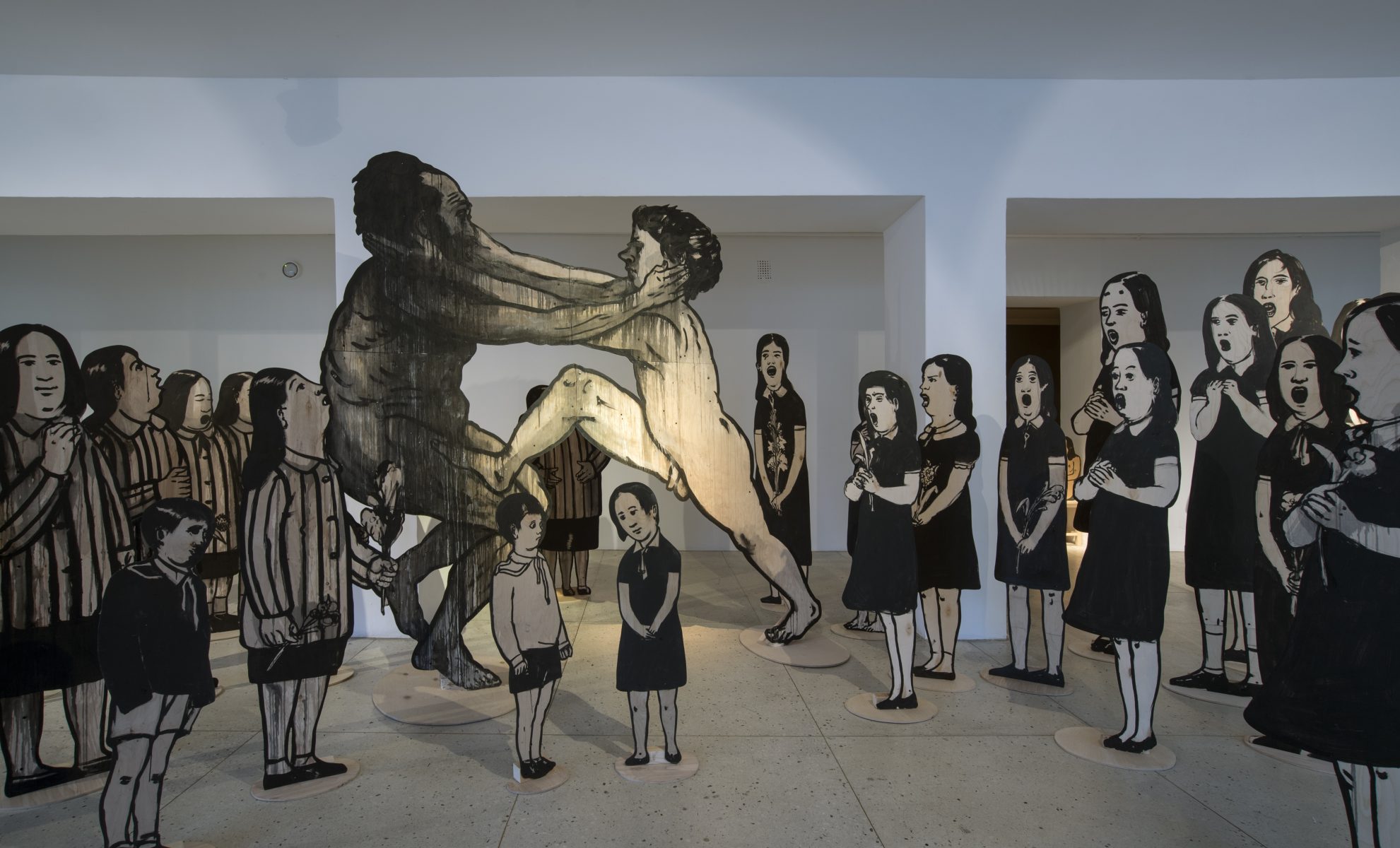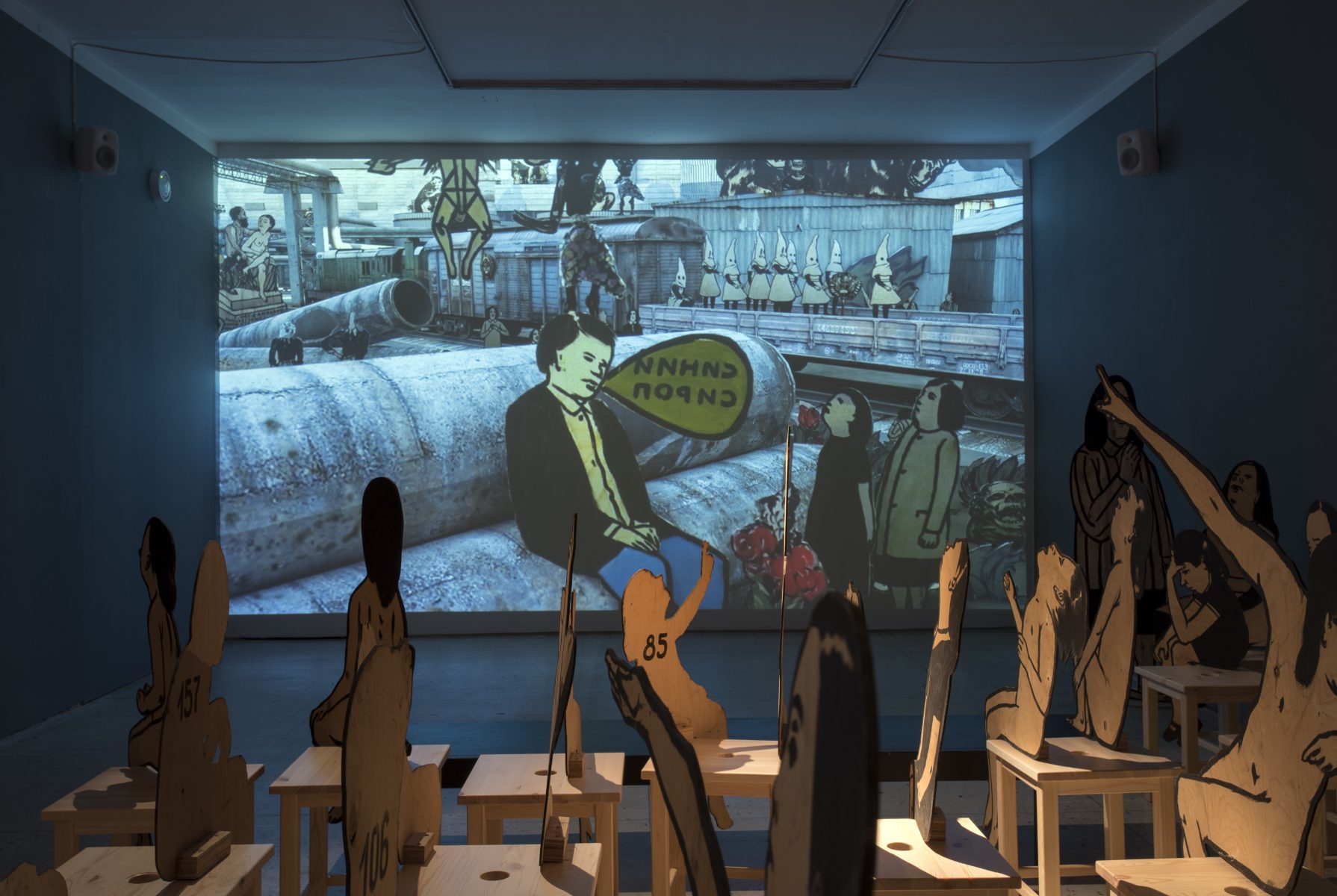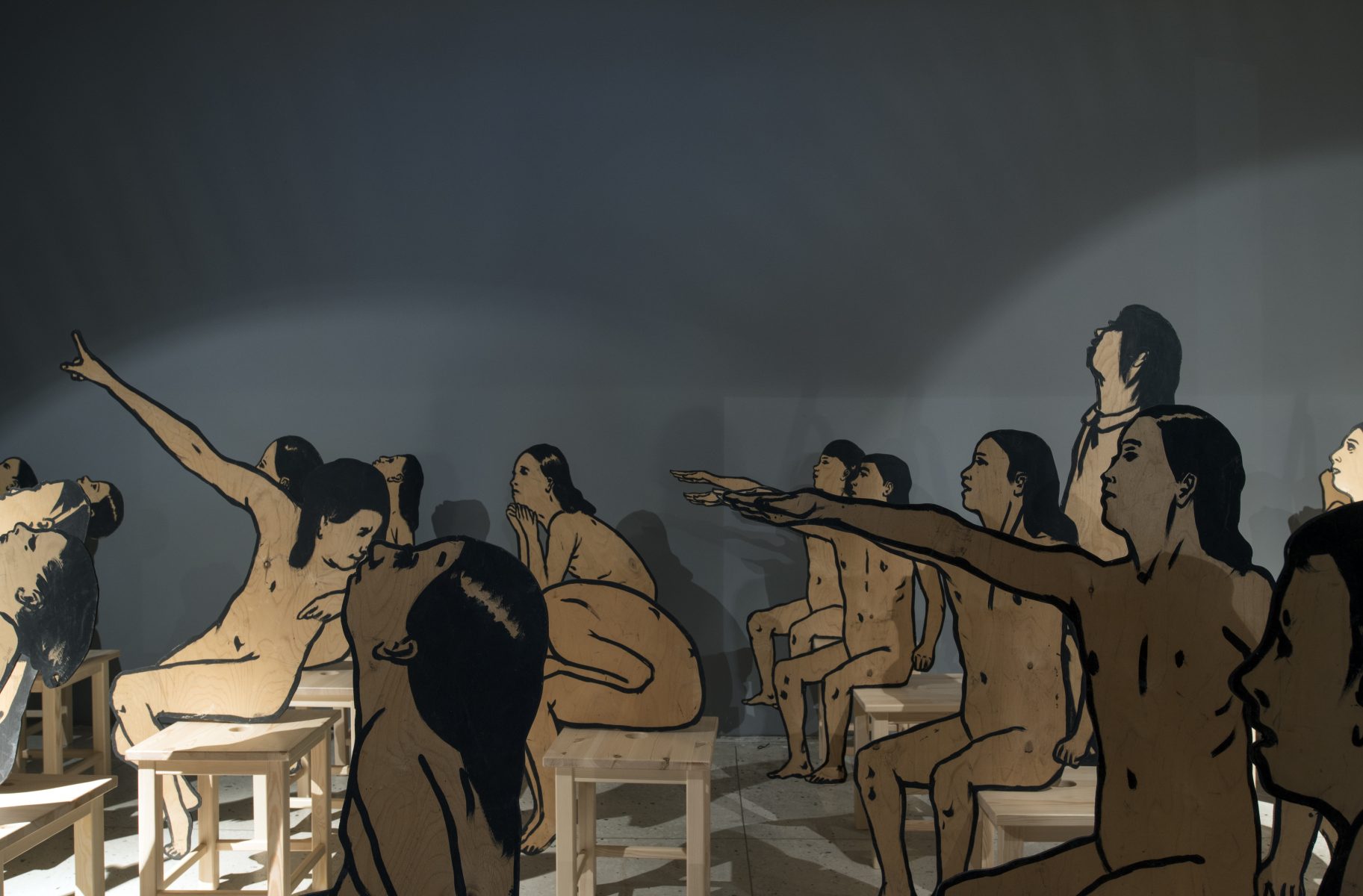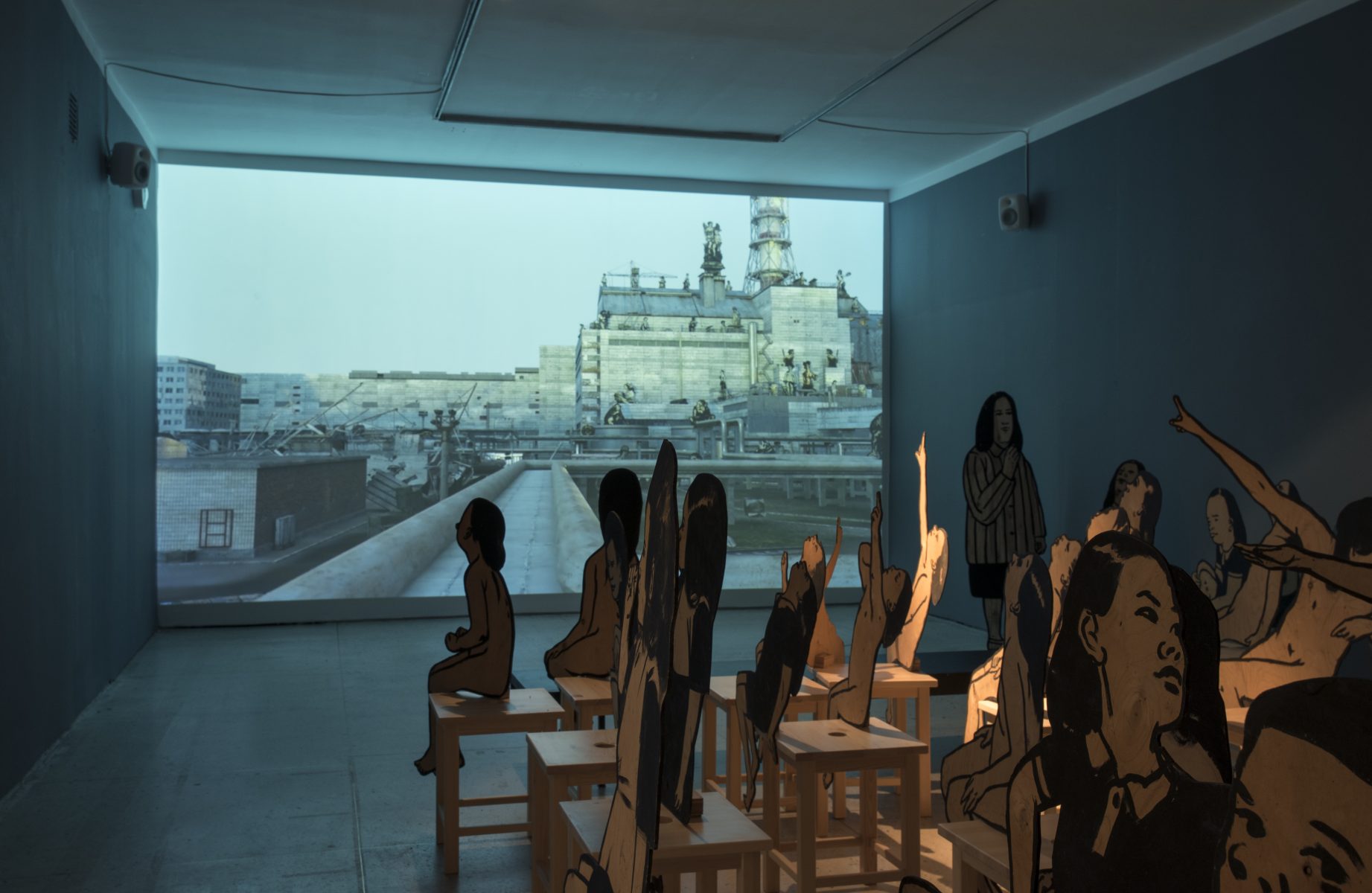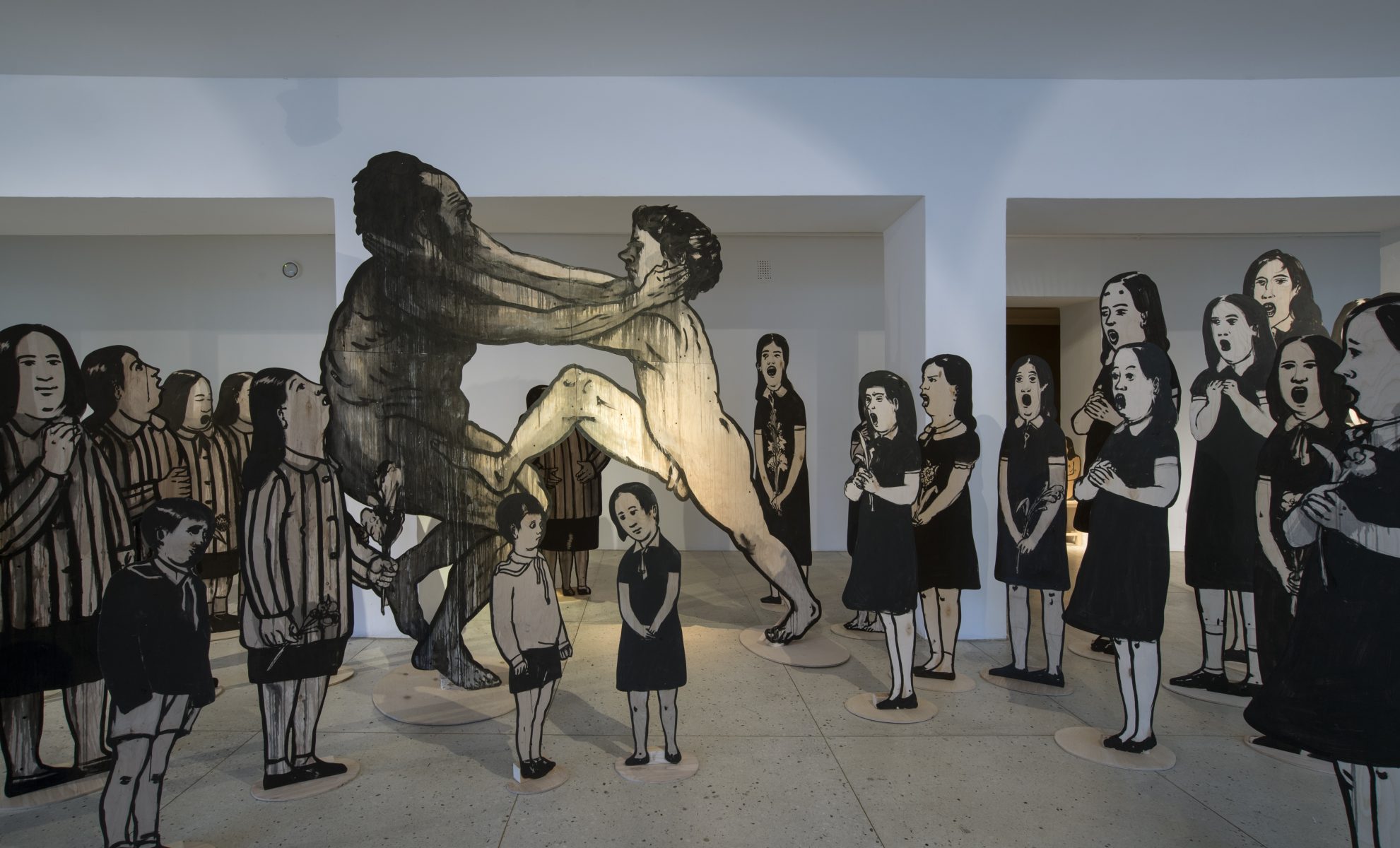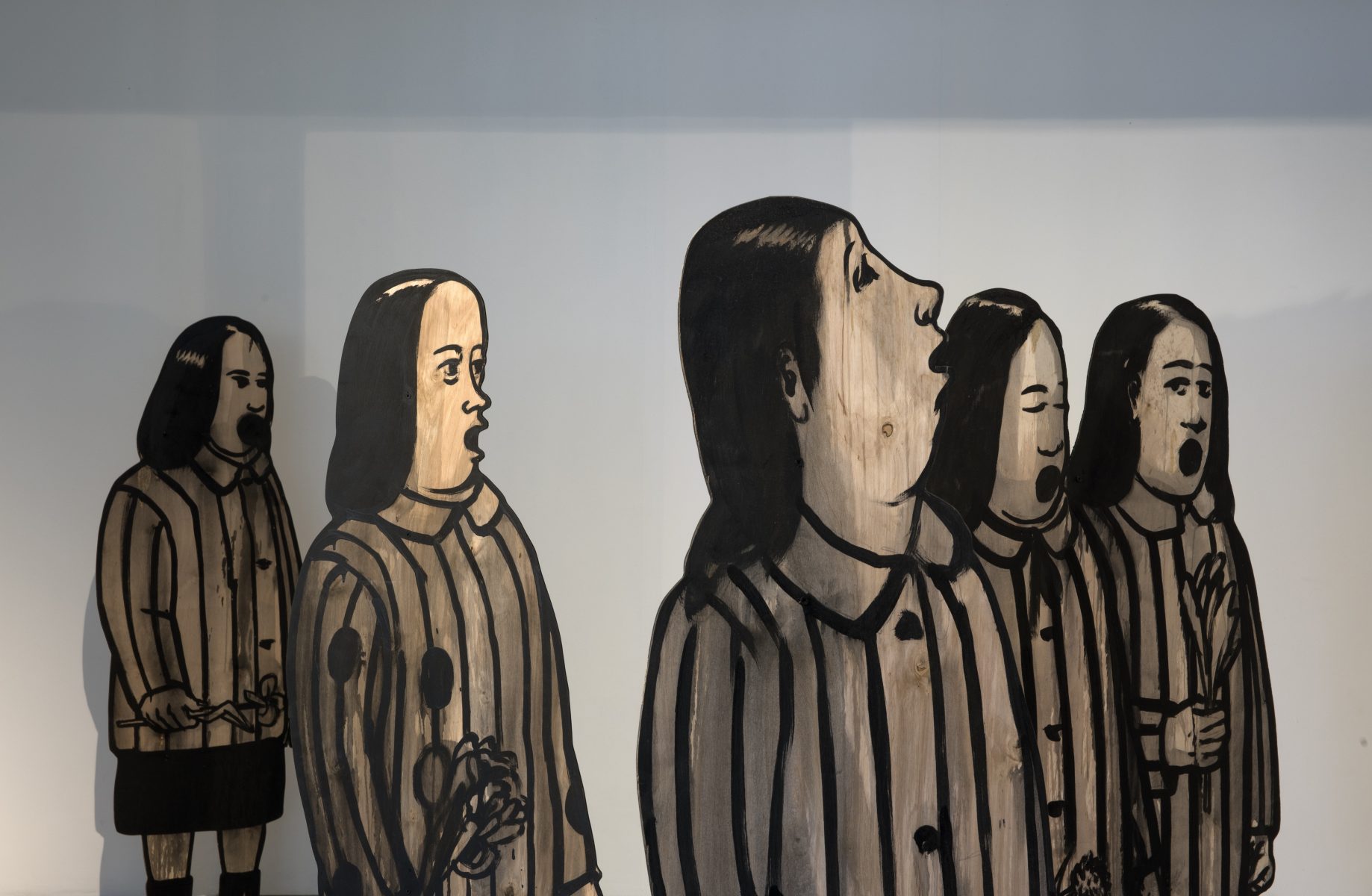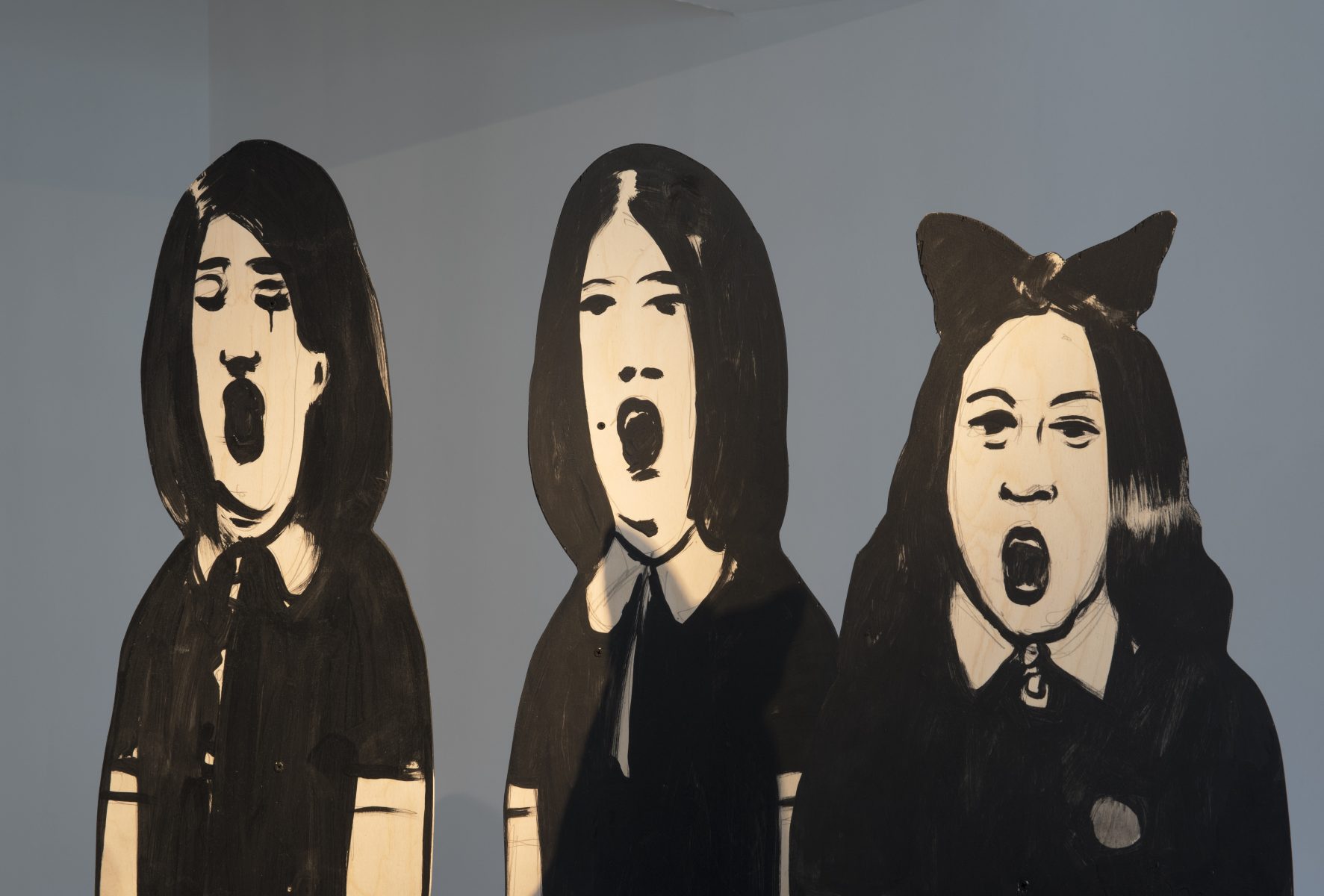Shishkin-Hokusai. Second Life
Curator: Janno Bergmann
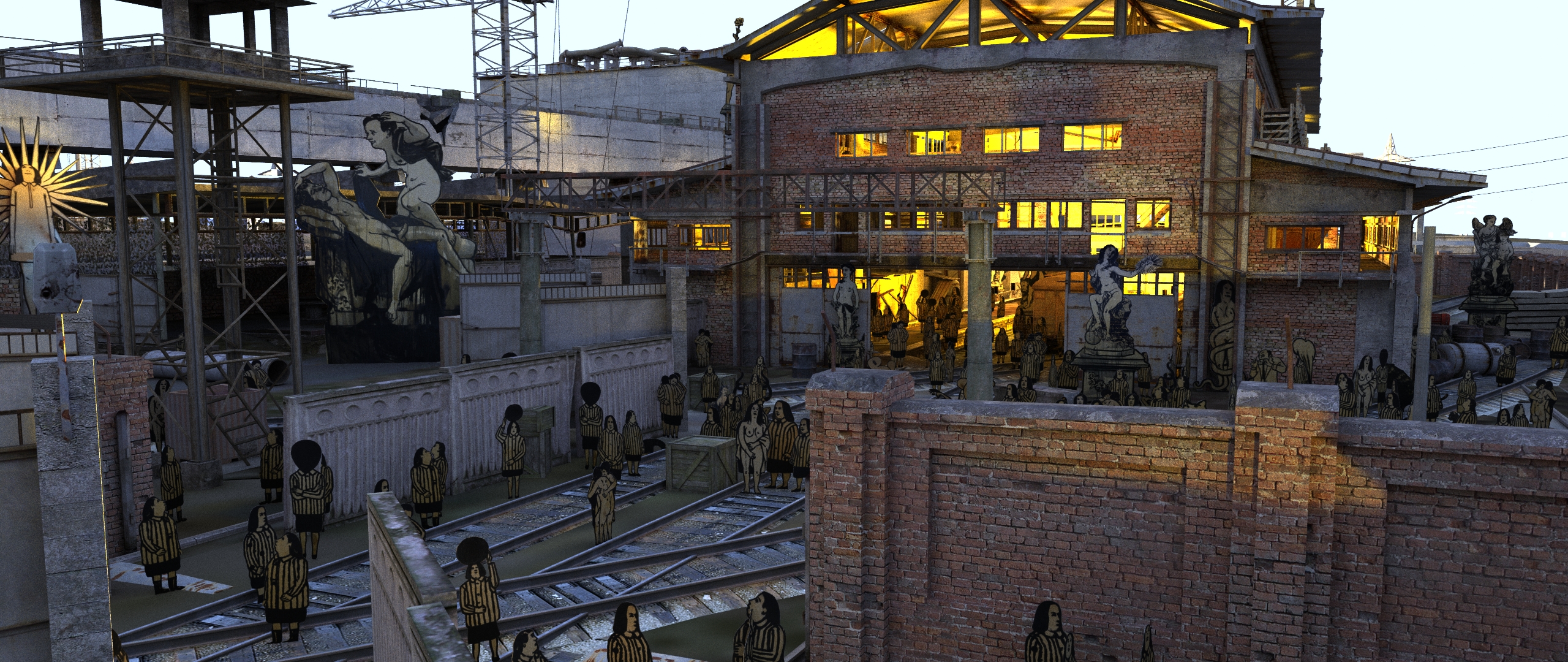
Two artists from St Petersburg – Vladimir Kozin and Shishkin-Hokusai are completing the 2017 exhibition programme at the Art Hall galleries. They bring with them a “delicate set of seemingly contradictory features: on the one hand, sharply ironic social criticism, and on the other, a poetic-romantic cognizance of the world,” as curator Janno Bergmann characterises the exhibition.
Aleksander Shishkin graduated from the Art and Design Faculty of the Leningrad State Institute of Theater, Music, and Cinematography in 1995. He has worked with famous directors in Russia’s best theatres, and been awarded the Seegull (Чайка), Crystal-Turandot and Oleg Tabakov theatrical awards. He has also won the Golden Mask award four times, as well as the Golden Sofit award.
Shishkin-Hokusai’s first solo exhibition took place in 2013 at the Marina Gisich Gallery. The works, comprised of sensitive paper scenes installed in juice cartons were widely praised. A few years ago Shishkin had added the name ‘Hokusai’ to his surname in order to separate his work as a fine artist, from that as a theatrical designer: “Hokusai is to Japan what Ivan Shishkin is to Russia. In addition, his artistic aesthetic is close to mine… Shishkin worked with nature, Hokusai with human characters… In this way, I am marking off two vectors: Shishkin as an environmental moment and Hokusai as a psychodrama, and working with homo sapiens.”
Shishkin-Hokusai´s increasingly active work as a visual artist is continuing with his plywood installations. These have been hand-drawn and stylised by the artist. The largest installation to date, which was completed in 2015 and included a couple of hundred figures (with heights up to 12 metres), was called Practices of Growing Up. It was first exhibited at the Street Art Museum in St Petersburg, and thereafter, in Ufa and Voronezh. The installation called Storming was installed in the courtyard of the Shtager Gallery in London in October 2017. In the artist’s interpretation, the plywood battlefield marking the centenary of the Great October Revolution, which changed the societal order, has become a sexual revolution. The work will also move on to other locations in England.
Although Shishkin-Hokusai’s art projects seem to be growing, while his theatrical projects are shrinking, it is not likely that he will abandon one in favour of the other – the two constantly supplement and boost each other: “Contemporary art tries to retreat from emotionality. To treat it as noise. Theatre, on the other hand, actively parasitizes emotionality. In my works, I am turning toward emotional receptivity… One way, or another, the theatre is like a narcotic for me and I cannot give it up yet.” Marat’s Bath, the artists kinetic installation, which was awarded the Kuryokhin Prize this year, is moving away from spatial installation that are close to the theatre, and moving toward densely charged sculptural object. This is a powerful image of a weapon that resembles an executioner’s axe and proudly spread-out birdwing at the same time.
Along with his installation, Shishkin-Hokusai’s exhibition at the Tallinn Art Hall Gallery includes a two-part video titled Radioactive Versailles, which was completed in 2016. The video was inspired by the dynamics of a computer game S.T.A.L.K.E.R./Schadow of Chernobyl with the action taking place within a static mock-up.
The curator of the Second Life and Russian Baroque exhibition is Janno Bergmann (b. 1975), who is known as an artist and promoter of artistic relations between St. Petersburg and Pärnu County. Last year, he also curated a selection of St Petersburg contemporary visual art at the Tartu Art House. The creatively active Bergmann has graduated the Sütevaka Secondary School, Academy Non Grata and Academy Grata that are of noteworthy importance on the Estonian art scene.
We would like to thank: Estonian Cultural Endowment, Estonian Ministry of Culture, Tallinn Department of Culture, Veinisõber, Kuu Stuudio and Sadolin.



